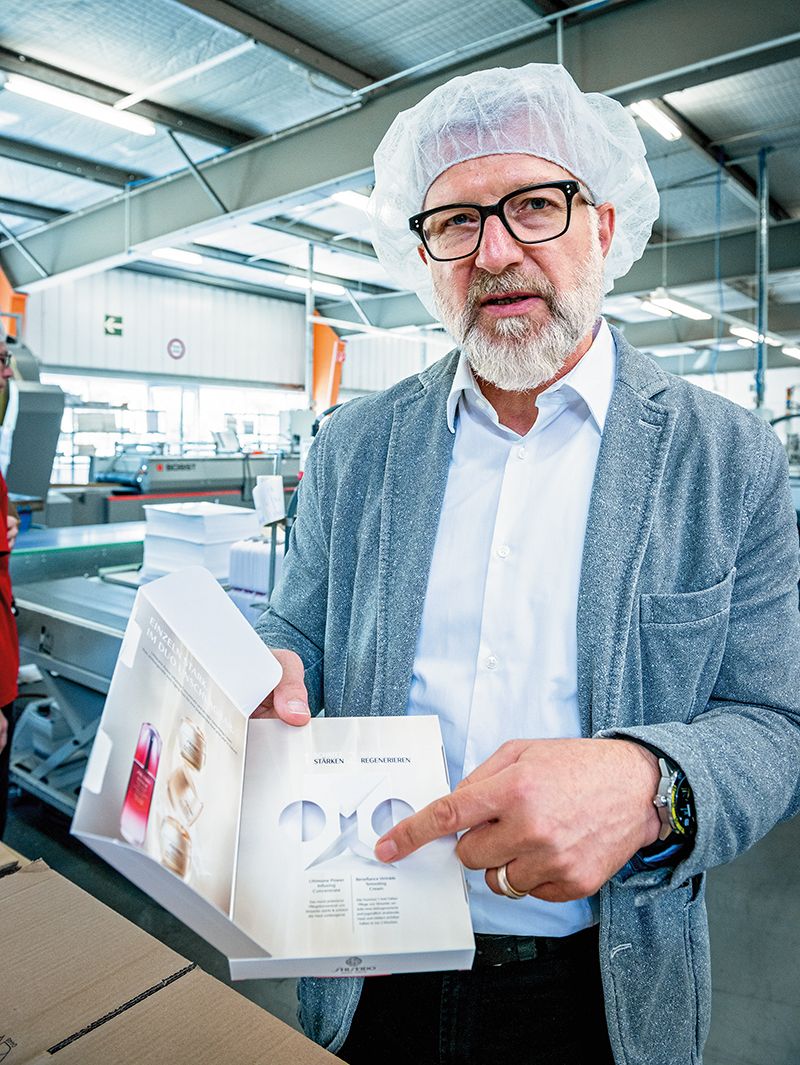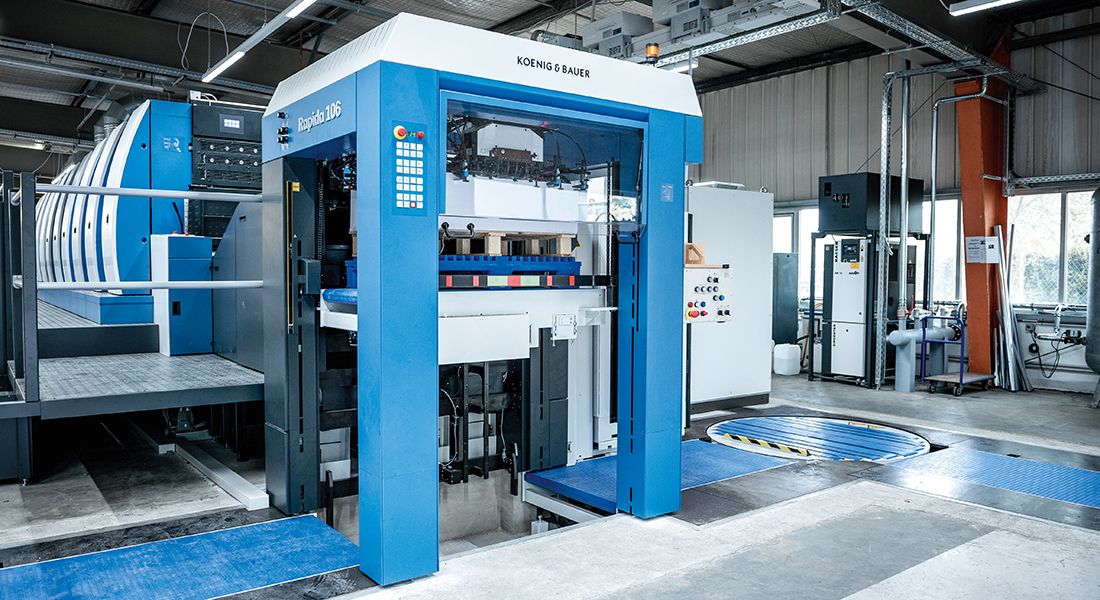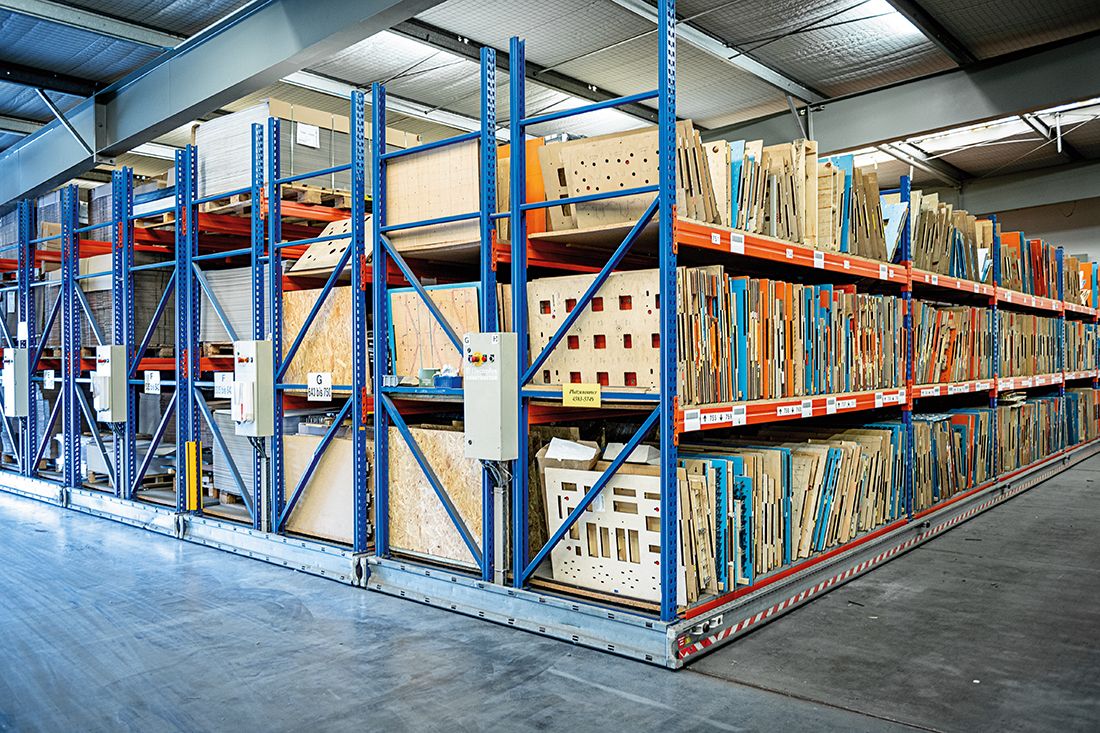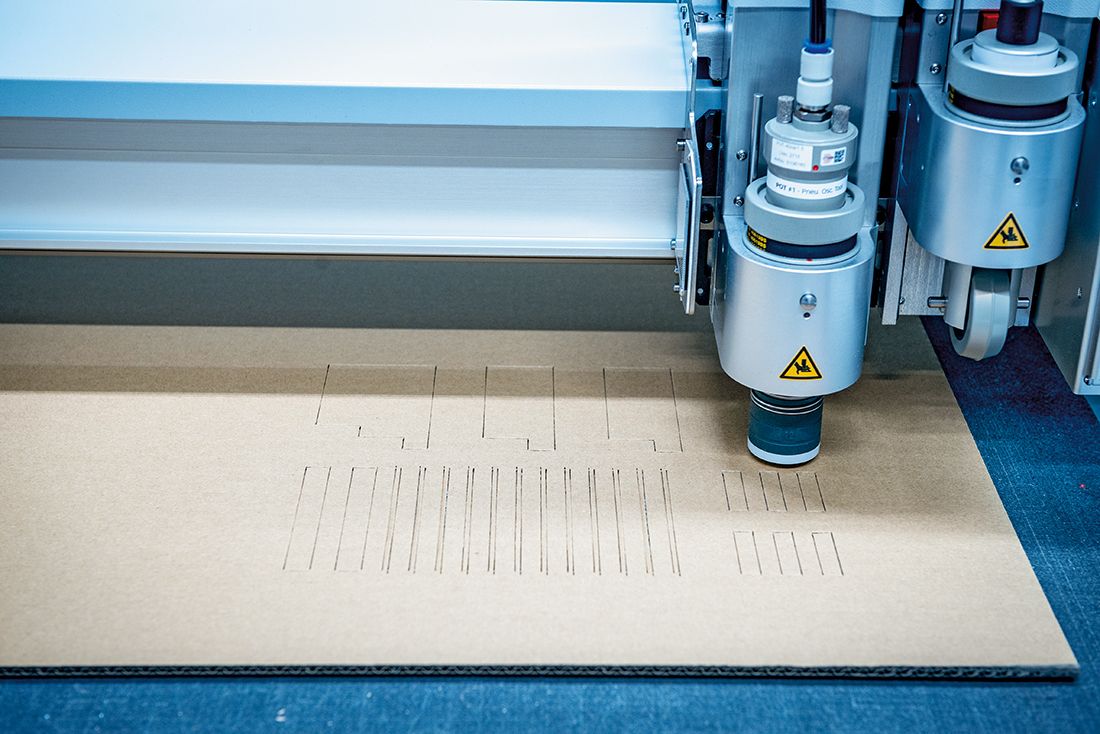Special Rapida 106 press to celebrate the 100th anniversary of Richard Bretschneider
Into a second century with a finishing speedster
On 20th September, packaging and finishing specialist Richard Bretschneider in Braunschweig in Northern Germany celebrated the company’s 100th anniversary with customers and suppliers. The occasion also heralded the transition to an even more successful second century in the company’s history – with future-oriented technology, a new development centre, and innovations in automation and robot systems.
Bretschneider’s vision has for a long time been to seek recognition as a premium supplier of complex and highly refined packaging, but that nevertheless on the basis of industrial production. The company has thus deliberately positioned itself between the major packaging groups on the one side and smaller craft-oriented businesses on the other. Already today, Bretschneider is a source of exceptional packaging solutions – folding cartons and mailings with special constructions, gift sets, advent calendars and displays – for beauty, food and non-food products, as well as for the automotive segment.
Innovative finishing options
Punctually for the jubilee, a Rapida 106 was installed and taken into service. With six printing units, coater, intermediate drying ahead of a further printing unit and coater, extended delivery and pile logistics, it is very different to the presses used by other packaging printers. Managing director Wolfram Zehnle explains: “We wanted to be even more variable in our finishing options.” Classic double coating applications can be complemented with innovative methods which set Bretschneider apart from its competitors.

Managing director Wolfram Zehnle shows one of the complex and highly refined products which are everyday routine for the company
The decision to invest extensively in new technologies was also driven by increasing customer demands and needs. A team of nine in-house staff works solely on product development. They design the most varied packaging solutions for subsequent realisation in the production centre. Bretschneider’s customers expect highly detailed technical advice, taking into account the very latest finishing technologies. On the basis of 3D PDFs, 3D renderings or ultimately a white sample, they reach a final decision on the packaging to be produced. Over a period of three-and-a-half months, for example, the Bretschneider specialists developed the packaging for 140 different products for a cosmetics manufacturer, and then produced this packaging in corresponding series with UV spot-coating and embossing effects.

Pile logistics at the feeder of the Rapida 106
“Print tests taken very seriously”
Before the decision was reached in favour of the Rapida 106, print tests were conducted with two manufacturers. Koenig & Bauer scored with its production performance, low waste and consistently high quality. “Our tests were taken very seriously,” says Zehnle. Factors important to him, the other decision-makers and also the future operators were fast ink changes, parallel washing and the facility for washing of any unused inking units during production, fast anilox roller changes, high flexibility in terms of the UV drying, inline colour control and a high production speed.
It is immediately evident that the printers are really looking forward to work on the new press with all its automation features. As soon as the Rapida 106 has taken over the production currently handled by the two predecessor presses, they will be dismantled and removed. Despite then having only one press, the company is reckoning with significant additional capacity. The halving of makeready times and the higher production speed mean that the jobs printed on the previous presses can now be completed in just two shifts. The third shift will then be available for new projects. That will also be necessary, because customers are increasingly looking for pure board alternatives to their currently mixed production. Experience in Braunschweig even shows that this is given priority over a lower price in many cases.
Press operation and consumables tracking, a matter which is especially important when producing food packaging, are to be further simplified in the future. Modern smartphone-based operating philosophies will soon be introduced with the ErgoTronicApp (mobile console) and ProductionApp (batch tracking and inventory management).

Enormous capital: More than 4,500 die-cutting tools can be called up from the automated stores at any time
Comprehensive process automation
Bretschneider is implementing comprehensive process automation far beyond just the print production stage. An automated packer optimises the boxing of folding cartons and mailings. Subsequently, a palletiser robot takes care of closing, labelling, palletising and removal of the full boxes. A further fully automated production line with state-of-the-art robot equipment raises co-packing performance to new levels. Up to 30,000 articles can be packed every hour with parallel optical inline quality control.
That full service in connection with packaging goes much further than printing, die-cutting and gluing is illustrated by the floor space assigned to the various departments. While the machines for three-shift production occupy around 6,000m2 (64,500sq.ft), twice that area is available for packing and logistics. The plant itself offers 8,000 pallet storage locations. And even they can be supplemented, if necessary, with additional capacities within the Streiff Group, the parent company of Richard Bretschneider.
Interesting website:

In the modern development centre, cutting plotters with a working width up to 3.20 metres produce samples of new packaging solutions
Martin Dänhardt
Background photo: Stefan Schulz and his printer colleagues were involved in the decision to purchase a Rapida 106 with extensive finishing options
